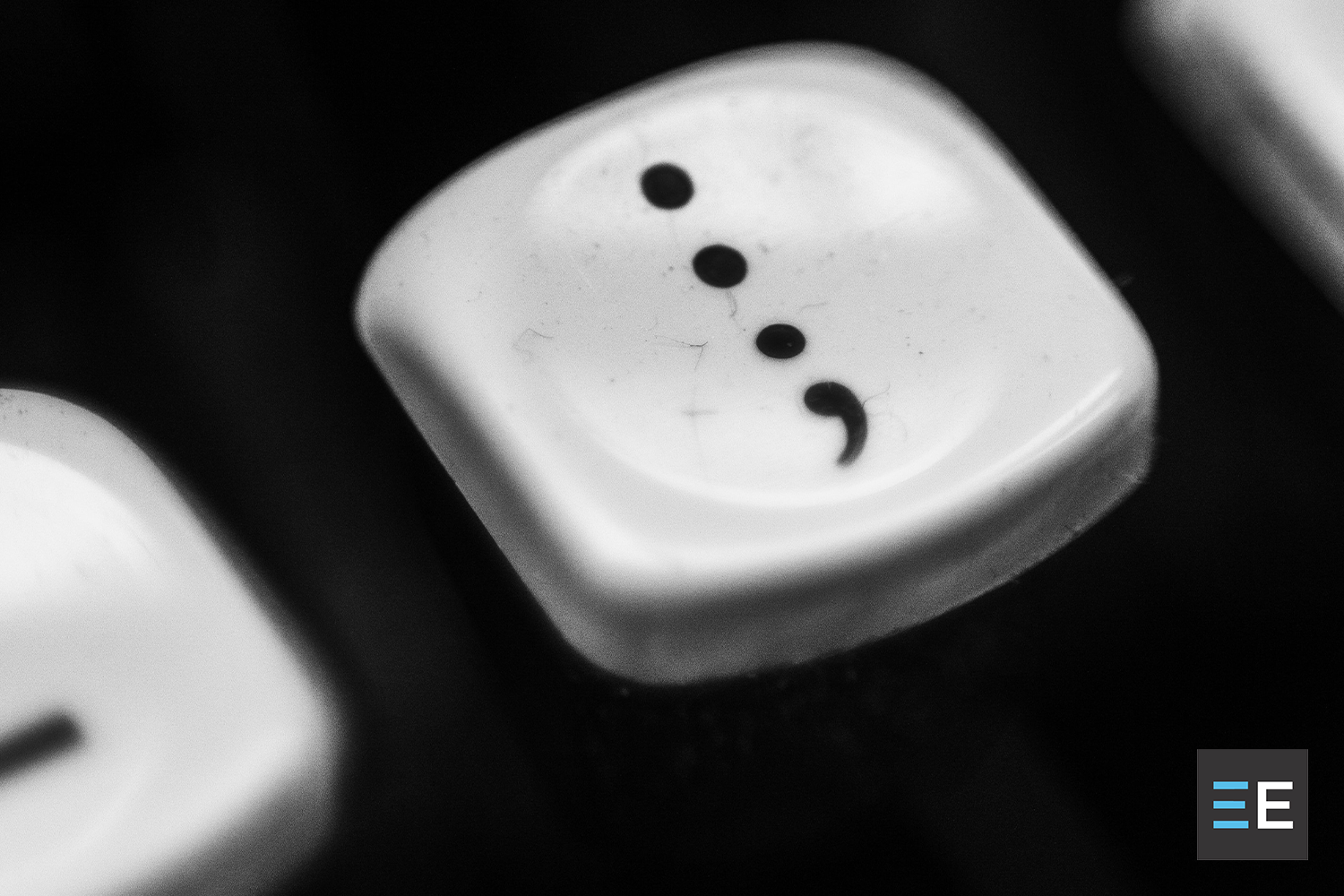Most writers are familiar with the basic rules of grammar and punctuation. Your work is filled with periods, commas, question marks, and exclamation points. However, not all writers are as familiar with how to use the semicolon punctuation mark properly as they are with other punctuation. Should semicolons only be used for lists? Or do semicolon rules allow for other instances as well?
Proper semicolon usage can get a little confusing. Fortunately, you don’t have to be a professional editor to learn the rules—you can freely include semicolons in your own writing! As with any language or grammar best practice, it’s helpful to understand semicolons by first learning what they are—and then by looking at some examples.
What is a semicolon?
You’ve seen semicolons before—and maybe you’ve even used them in some of your writing projects. A semicolon looks like a period sitting on top of a comma. It’s similar to a colon, which is basically two periods stacked on top of each other. However, colons and semicolons have very different uses. It’s now time to learn when a semicolon should be used!
When should a semicolon be used?
Semicolons should be used in two main scenarios:
- To connect two sentences while still using correct grammar. A a semicolon can help you combine two ideas and avoid writing a run-on sentence.
- To write a complex list of three items or more. These lists don’t just obey the rules of the English language—they also help your reader understand the separation between the items in your list.
There are a few different ways in which you can use this versatile punctuation mark to combine sentences. Before you start writing a story or chipping away at your company’s digital content calendar, it’s important to thoroughly understand when a semicolon should be used to connect sentences.
When should a semicolon be used to connect sentences?
Connecting sentences can sometimes increase your writing’s quality. Instead of offering short or choppy sentences, proper semicolon usage provides smoothness and continuity to each paragraph. However, keep in mind that not all sentences can be combined! Here are a few semicolon rules to keep in mind as you incorporate this punctuation mark into your writing:
- Link two independent clauses that are similar to each other.
- Show separation between two independent clauses. In these instances, you’ll have to use conjunctions or transitional phrases to follow proper language and punctuation rules.
- Join two independent clauses that would otherwise be in two separate sentences, but delete the conjunction.
Depending on what you’re writing, you’ll have to determine whether it’s appropriate to combine short sentences into long ones. For instance, if you’re writing a blog, social media post, or other online content, too many long sentences can lead to SEO mistakes. However, connecting thoughts and ideas is great for stories or formal writings like an academic paper or a business white paper.
Now that you’ve learned a bit about the semicolon rules for connecting sentences, you can dive into how to use semicolons to write a list.
When should a semicolon be used to write a list?
In addition to connecting sentences, semicolons are often used in lists. While some writers prefer a bulleted list of their points, other writing lends itself to sticking with a more traditional paragraph. In these cases, you can identify the category with a colon and separate each list item with a semicolon.
As you create your list, keep your reader in mind. Try not to make the list too long or verbose, since you want your reader to understand your message. Separating the listed items with semicolons will help your reader identify the different elements of the list. However, if each item is a long phrase—or a complete sentence on its own—a bulleted list might be better.
Proper semicolon usage takes some practice. One of the best ways to build a solid foundation of understanding semicolon rules is to review some examples of how you can properly use this punctuation mark.
Examples of semicolon uses
If you’re not yet confident in proper semicolon usage, don’t worry! There are plenty of tutorials and guiding resources available to you. However, before you start combing the internet for articles that you can only hope abide by the proper grammar and punctuation rules of the English language, check out some examples of how to use a semicolon.
What are examples of using semicolons for two independent clauses?
You’re already aware that semicolons can be used to combine sentences. In particular, you can join two independent clauses that are similar to each other. Or you can separate these clauses entirely!
Here are examples of using semicolons to link two similar independent clauses. These could be two completely separate sentences, but the semicolon usage allows for one longer sentence:
- I have a taste for pasta; John wants pizza instead.
- Everyone received a nice holiday bonus; the company treats their employees well.
Sometimes you might want to separate two clauses by adding a semicolon and a conjunction. For example:
- It was raining this morning; however, we still went to the park.
- After work, I had to run a bunch of errands; in other words, it was a hectic day.
Finally, in some cases, you can use a semicolon instead of a conjunction. Here is an example of two different ways to communicate the same idea:
- The house is really nice, and it has a brand-new kitchen.
- The house is really nice; it has a brand-new kitchen.
Combining sentences can help you write more elegantly so that your reader can maintain continuity in one sentence instead of combining multiple sentences in their own mind. Additionally, you can use semicolons to write a list that will also help your reader understand your message!
How do you use semicolons in a list?
Semicolon usage in lists is very common. Basically, you use a colon to set the expectation that a list will immediately follow, and then you separate each item with a semicolon if the items are complex (meaning they contain their own punctuation. Consider this example:
- My dog loves all sorts of activities: she loves going to the park; she also enjoys playing with her favorite toy; and, of course, she’s a fan of napping on the couch.
Whether you’re using semicolons to connect sentences or write a complex list, it is always important to use proper grammar and punctuation. If you learn the rules for proper semicolon usage, your readers will more easily understand what you’re trying to say. Plus, you’ll be revered as a master of the English language!
Proper grammar and punctuation are vital to your Success
Not all writers can easily grasp semicolon rules and usage. After all, semicolons can be one of the more challenging punctuation marks! If you need a partner to help edit or proofread your writing to make sure you’ve used semicolons correctly, look no further.
Elite Editing offers an array of services to help businesses and individuals create and publish fantastic—and grammatically correct—content. Visit our website to learn more!








